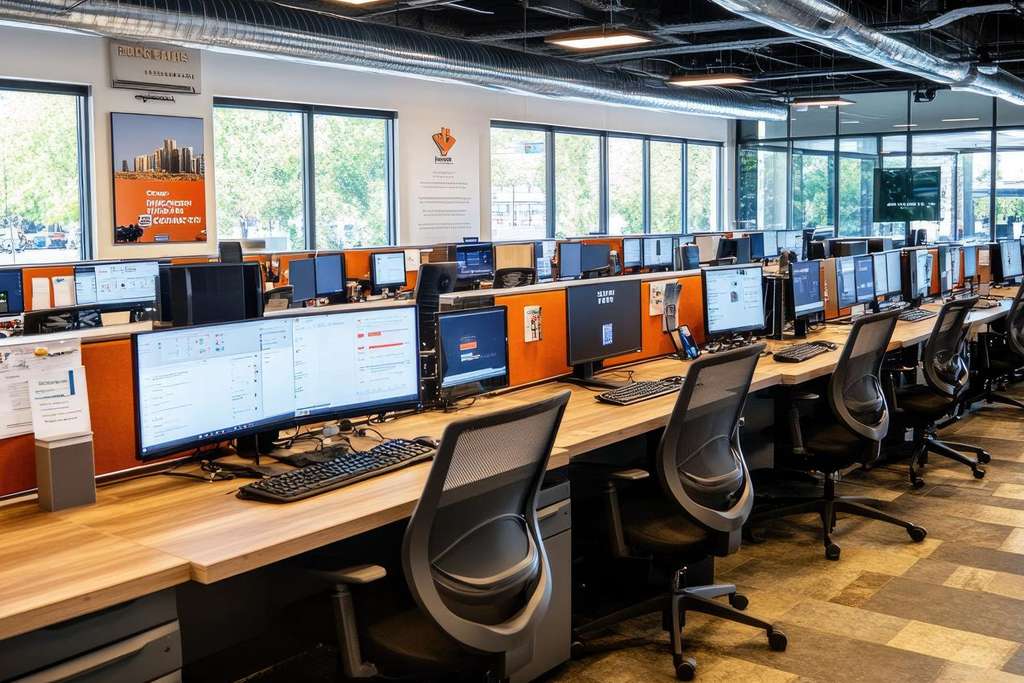In an increasingly digital world, businesses rely on robust IT systems to maintain seamless operations. When setting up a new office or relocating an existing one, ensuring the continuity and security of IT infrastructure is critical. IT setup and relocation involves the careful planning, installation, and migration of hardware, software, and network systems, ensuring minimal disruption to business processes.
IT Setup
IT setup refers to the initial configuration of an organization’s information technology infrastructure. This includes establishing network systems, installing hardware like servers and workstations, configuring software, and setting up cloud services. A well-executed IT setup ensures that all components work in unison to support business operations.

Key components of an IT setup include:
- Network Infrastructure: Establishing a fast and secure network is fundamental for modern businesses. This includes setting up routers, switches, firewalls, and Wi-Fi access points. The network should be designed to ensure reliability and scalability, allowing the company to grow without significant changes to the infrastructure.
- Hardware Installation: The setup involves procuring and installing servers, storage systems, computers, and other necessary devices. A careful assessment of the organization’s needs helps in selecting the right hardware, ensuring it can support the required workloads and is compatible with future upgrades.
- Software and Systems Integration: Ensuring that all software systems—such as operating systems, enterprise resource planning (ERP) tools, customer relationship management (CRM) platforms, and productivity applications—are properly installed and configured is a critical part of the IT setup. Integrating these systems allows seamless data sharing and collaboration across the organization.
- Cybersecurity Measures: Cybersecurity is a top priority during the IT setup phase. This involves configuring firewalls, antivirus software, and intrusion detection systems, as well as setting up secure authentication methods.
- Cloud and Virtualization Setup: Many businesses are moving towards a cloud-based infrastructure, either through public cloud services like AWS, Azure, and Google Cloud, or hybrid models. Virtualization technologies, such as virtual servers and desktops, also enable efficient resource management and can be easily scaled up as the business grows.
IT Relocation
IT relocation is the process of moving an organization’s IT infrastructure from one physical location to another. This could involve moving to a new office building or consolidating multiple locations into a central hub. IT relocation is a complex task that requires meticulous planning to prevent downtime and data loss.

The steps involved in IT relocation include:
- Pre-Move Assessment and Planning: A detailed audit of the existing IT infrastructure is crucial before any relocation. This includes cataloging all hardware and software assets, understanding network dependencies, and ensuring that the new location can support the required infrastructure. Pre-move planning also involves coordinating with ISPs and other service providers to set up internet and telecommunications services at the new site.
- Data Migration and Backup: Before the physical move, organizations should ensure all critical data is backed up securely, either in the cloud or on-site backups. Data migration should be planned carefully to avoid any loss, corruption, or downtime. In cases where the IT move involves a data center, businesses often use specialized data migration services to ensure the integrity of their information.
- Hardware Decommissioning and Reinstallation: IT relocation involves the safe decommissioning and transportation of servers, networking equipment, and workstations. Careful handling of hardware during transport is vital to prevent damage. Once moved, all equipment is reinstalled and tested to ensure it functions correctly in the new environment.
- Minimizing Downtime: One of the biggest challenges of IT relocation is minimizing business disruption. Strategies such as performing moves outside of business hours, temporary setups in both locations, (remove) and ensuring redundancy in systems can help ensure continuity.
- Post-Move Testing: After the relocation, comprehensive testing is essential to verify that all systems are functioning as expected. This includes checking network connectivity, verifying the proper installation of hardware and software, and ensuring all services (such as email and databases) are up and running.
Both IT setup and relocation are crucial undertakings that require strategic planning and technical expertise to ensure smooth and efficient operations. An effective IT setup provides the backbone for business processes, while a well-executed IT relocation ensures that operations continue uninterrupted. Businesses that invest time in planning these activities will enjoy greater reliability, security, and scalability in their IT systems.

